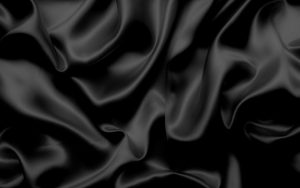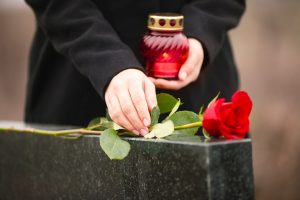
Every culture and religion have their own traditions and rituals surrounding the funeral, and the Jewish faith is no different. Today, let’s discuss 10 traditional Jewish funeral customs and their purpose and significance to the millions of people who follow Judaism. However, please note that there are several different movements within Judaism, which means their customs will vary a bit. But regardless of the branch of Judaism, Jewish funeral customs follow a strong set of beliefs tied closely to the Torah.
1. Taharah (Preparation of the Body)
In accordance with Jewish custom, the deceased’s body is washed, purified, and dressed after death (but not embalmed). This ritual washing is called taharah. Traditionally, women will complete taharah for women and men for men.
After the washing is complete, the body is often dressed in a plain ceremonial shroud (called a tachrichim). In some cases, the deceased may be buried in a kittel, which is a white garment worn on High Holidays or at weddings. For men, a prayer shawl and religious skullcap (or yarmulke) are also included.
2. Shemira (Watching Over the Deceased)
As a sign of respect and kindness, the deceased is never left alone from the time of death until services are complete. This practice of watching over or guarding the deceased is called shemira, and the person guarding the deceased is called a shomer.
This responsibility can be shared and taken in shifts. Often, it’s family members, friends, or members of the synagogue who step in to serve as shomrim. During shemira, comforting psalms can be read aloud with the intention of bringing comfort to both the spirit of the departed and that of the shomer.
3. K’vurah B’karka (Ground Burial)
Traditionally, burial takes place within 24 hours of death, but in some Jewish movements, more time is allowed. However, burial does still take place as soon as possible. In many cases, the funeral is held at the graveside, though it could also occur at the funeral home or synagogue.
The service may be brief and simple, designed to honor the loved one and to allow an opportunity to offer condolences to the family. There may also be readings, eulogies, and the recitation of prayer.
If you are a non-Jew and would like to know what to expect at a Jewish burial, make sure to read “Jewish Funeral Etiquette: What to Expect as a Non-Jew.”
4. Kriah (Tearing or Rending of the Garment)
Following the death of a loved one, immediate family members will often wear a black ribbon. This ribbon is torn as an outward sign of personal pain and grief. Orthodox Jews may choose to tear their clothing (often the collar), while Reform Jews tear the black ribbon instead. The tearing most often occurs before the funeral ceremony in a private room with only immediate family members present.
The torn ribbon or garment is then worn during shiva, but not on Shabbat or Festival Days. Traditional Jews may continue to wear the torn garment through the 30 days of shloshim. (We will discuss shiva and shloshim in more detail shortly.)
5. Levayah (Accompany the Deceased)
Similar to a non-Jewish funeral procession, Jewish mourners accompany the deceased to the final resting place. This action affirms that those who love the deceased are still and forever joined together. It is also thought that the soul of the departed is comforted by the presence of their loved ones during the transition from one life to another.
Because burial is perhaps the most important part of the Jewish funeral, mourners should make every effort to participate in levayah and the graveside service.
6. Seudat Havra’ah (Meal of Condolence)
After burial, the meal of condolence typically takes place at the synagogue or the home of the bereaved. Friends, neighbors, or extended family members provide a meal that often includes lentils, hard-boiled eggs, and bread. In Judaism, these foods are associated with mourning or with life itself. Other simple and easily digestible foods may also be included in the consolation meal.
7. Shiva (Week of Mourning)
Shiva is the first seven days after the funeral – a mourning period where the deceased’s family stays at home and receives guests. Traditionally, shiva begins immediately after the burial and is a time to acknowledge any feelings of grief and sadness. Today, many families observe only one or two days of traditional shiva rather than the full seven.
During shiva, the bereaved family will recite prayers and reflect on their loss. Guests offering condolences often bring kosher meals as a gift to feed the family and their visitors.
Throughout shiva, personal grooming and physical intimacy are not allowed. Mirrors are also covered to encourage mourners to focus on the deceased and not on personal appearance. These actions symbolize the disruption that death brings and demonstrate grief through self-sacrifice.
8. Shloshim (First 30 Days of Mourning)
Directly following shiva, there is a 30-day period of mourning called shloshim. During this time, the bereaved family will go back to their normal routines, but they will continue to recite prayers and daily hymns. Some Jews may choose to wear the torn black garment or ribbon from the kriah ritual. Additionally, it’s common to refrain from haircuts, shaving, and attending social or even religious events.
Some families may choose to end shloshim with a special service where mourners speak about the deceased. Also, if there is to be a public memorial service, it often occurs after the conclusion of shloshim.
9. Yahzreit (Anniversary of the Death)
Every year, on the anniversary of the deceased’s death, the family lights a candle and leaves it to burn for 24 hours. This is an act of remembrance and helps the family on the grief journey.
It’s common practice to recite Jewish prayers or to attend synagogue services. Other families may choose to share a song, place a picture of the lost loved one nearby, recite the Mourner’s Kaddish, or visit the grave of the deceased.
10. Hakamat Ha-Matzeivah (Unveiling Ceremony)
Approximately one year after the funeral, the family gathers at the gravesite for the unveiling of the gravestone. There’s often a brief service, which may include readings and recitations, a few words about the deceased, and the unveiling itself. The presence of a rabbi is not required, but some families may choose to include one in the planning and facilitation of the ceremony.
Hopefully you now have a deeper and better understanding of the beauties of Jewish funeral traditions. Again, these customs will vary a bit depending on whether a person practices Orthodox Judaism, Reform Judaism, or one of the other movements. But overall, the heart behind the Jewish funeral tradition is to respect the deceased in every way possible and support the grieving family as they mourn the loss of someone dearly loved.





































































